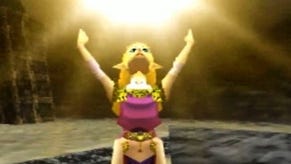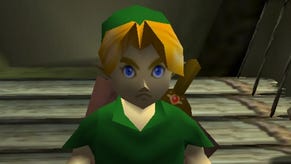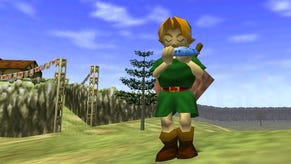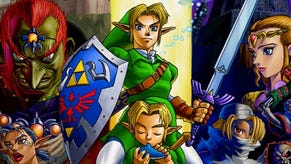The Legend of Zelda: Ocarina of Time 3D
Remaster Sword.
We have such a strange attitude towards our past as gamers. Our neophilism is such that re-releases are often regarded as brazen attempts at daylight robbery. It's a bizarre mindset that isn't to be found anywhere else in entertainment. ("Remasted Beatles albums? But I already heard Abbey Road.")
Of course, there's a right way to go about it. Stick five ROMS or PC ports on a disc without bothering to construct so much as a new menu screen - I'm looking at you, Dreamcast Collection - and you deserve all the bollocking you get. But remakes - proper remakes, undertaken with fidelity, respect and enthusiasm - those are a different matter altogether. This is still a young industry, and up until very recently, technological restrictions often prevented games from being all that they could be. Remakes have the potential to realise a game's vision in a way that wasn't possible when it was first made.
That is exactly what The Legend of Zelda: Ocarina of Time 3D does. This is a better version of Ocarina of Time that's worth every penny of its modern-day price tag. Really, that should be all you need to know.
It looks glorious. New models, animations and textures breathe life into Hyrule, a world originally constructed in just 32 megabytes. It's no longer as angular and the insides of buildings no longer look like GIFs, but the style has been perfectly preserved. The improvement really is astonishing. It never even looked this good inside my head, never mind in reality. (Indeed, it looks so much clearer that one or two of the game's scariest creatures appear to have been slightly redesigned so that they look less disturbing in this higher resolution.)
The 3D, of course, adds a whole new level of visual sumptuousness. Motes of glittering dust float around in the Lost Woods; Navi flies excitably in and out of the screen to highlight points of interest; the view from Death Mountain really does stretch off into the distance. I find myself turning the 3D on for exploration and turning it off in dungeons so that my brain can concentrate on working itself around the puzzles without being distracted by enemies and the occasional unwelcome pillar leaping out at me.
There are subtle and not-so-subtle adjustments to the gameplay. Navi calls out less frequently, which makes her less annoying; the maps are clearer and easier to see; the item and inventory screens are down on the touch screen. Aiming the bow and arrow, catapult, hookshot or boomerang can now optionally be done by moving the 3DS around instead of using the analogue stick. I found the new motion control method considerably more accurate.
The dungeons and locations themselves don't seem to have changed at all, but these improvements make them feel modern and easier to play. Eiji Aonuma was right: being able to swap in and out of the Iron Boots with a prod of the touch screen does make the Water Temple less of a drain on your patience.
A lot of the innovations that Ocarina of Time made - the day-night cycle, the context-sensitive action button, the open-world exploration - have since become so standard that they no longer make much of an impact, but the sheer elegance and quality of the dungeon and world design is still breathtaking. It's a game designed across two complete timezones, a world subtly gated by a complex system of item collection and improvement. These are principles that haven't aged and that still outpace almost all modern games in their ingenuity. Wait until you get to the Spirit Temple, you'll see what I mean.
















